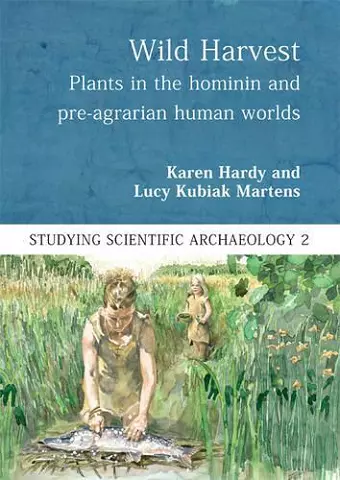Wild Harvest
Plants in the Hominin and Pre-Agrarian Human Worlds
Karen Hardy editor Lucy Kubiak-Martens editor
Format:Paperback
Publisher:Oxbow Books
Published:29th Feb '16
Currently unavailable, and unfortunately no date known when it will be back

Plants are fundamental to life; they are used by all human groups and most animals. They provide raw materials, vitamins and essential nutrients and we could not survive without them. Yet access to plant use before the Neolithic can be challenging. In some places, plant remains rarely survive and reconstructing plant use in pre-agrarian contexts needs to be conducted using a range of different techniques. This lack of visible evidence has led to plants being undervalued, both in terms of their contribution to diet and as raw materials. This book outlines why the role of plants is required for a better understanding of hominin and pre-agrarian human life, and offers a variety of ways in which this can be achieved.
Wild Harvest is divided into three sections. In section 1 each chapter focuses on a specific feature of plant use by humans; this covers the role of carbohydrates, the need for and effects of processing methods, the role of plants in self-medication among apes, plants as raw materials and the extent of evidence for plant use prior to the development of agriculture in the Near East. Section 2 comprises seven chapters which cover different methods available to obtain information on plants, and the third section has five chapters, each covering a topic related to ethnography, ethnohistory or ethnoarchaeology, and how these can be used to improve our understanding of the role of plants in the pre-agrarian past.
I heartily recommend this publication to anybody interested in plants, their use in past and present non-agrarian societies, and he methodologies required to study them. * European Journal of Archaeology *
This unique collection is valuable for paleoanthropologists and their graduate students seeking new perspectives on paleo-ecology and the evolution of hominin diet. It clearly summarizes the current Bstate of the profession. As a text, the price is reasonable and worth the investment. * Economic Botany *
This book is a noteworthy attempt to bring archaeobotany into the archaeological discourse and is useful for the student, the non-specialised archaeologist and the general reader. * Proceedings of the Prehistoric Society *
ISBN: 9781785701238
Dimensions: unknown
Weight: unknown
368 pages